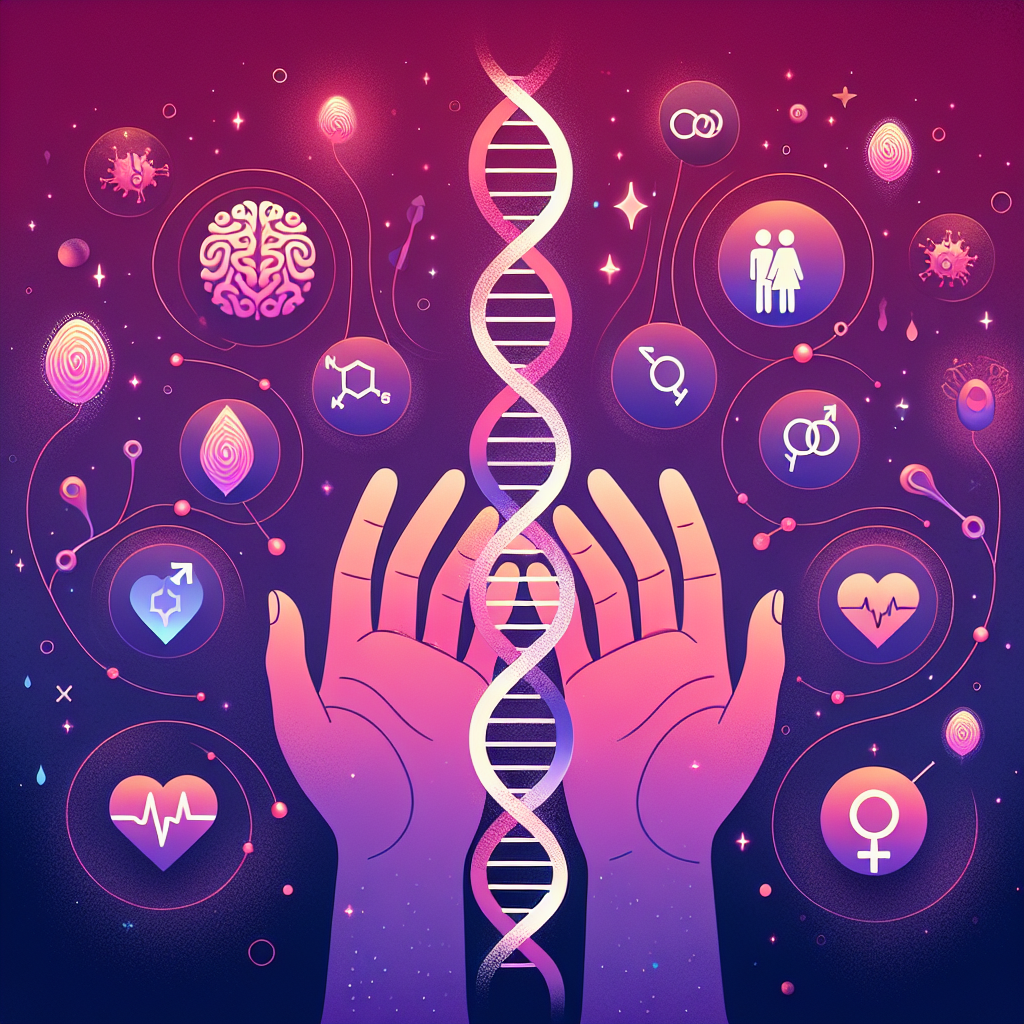Exploring the Science of Sexuality: What You Need to Know
Sexuality is a fascinating and complex aspect of human life that intertwines biology, psychology, and culture. Understanding the science of sexuality can help demystify our natural desires and behaviors, fostering a more inclusive and informed society. In this blog post, we’ll delve into the science of sexuality, exploring its various dimensions and what they mean for individuals and communities.
The Biological Underpinnings of Sexuality
At its core, sexuality is profoundly influenced by our biology. Sexual orientation, the spectrum of attraction that people experience, is often rooted in biological factors, including genetics and prenatal hormone exposure.
Research suggests that genetics play a significant role in determining sexual orientation. Studies involving twins have shown that identical twins are more likely to share the same sexual orientation compared to fraternal twins, indicating a genetic component. Additionally, prenatal hormone exposure, particularly the levels of testosterone, can influence sexual orientation. For example, higher levels of prenatal testosterone have been associated with an increased likelihood of non-heterosexual orientations in females.
Psychological Perspectives on Sexuality
While biology lays the groundwork, psychology adds layers of complexity to human sexuality. From early childhood, individuals begin to develop an understanding of their sexual identity and preferences through a combination of internal feelings and external influences.
Psychologists emphasize the importance of personal experiences and cognitive processes in shaping sexual identity. The interplay between one’s self-concept, societal expectations, and personal experiences can significantly impact how individuals perceive and express their sexuality. This dynamic is particularly evident in the development of sexual orientation and gender identity, which can evolve over time as individuals gain new insights and experiences.
Cultural Influences on Sexuality
Culture plays a pivotal role in shaping our understanding and expression of sexuality. Different societies have varied norms, beliefs, and values that influence how sexuality is perceived and expressed.
In many cultures, traditional beliefs and religious teachings have historically dictated norms regarding sexuality, often emphasizing heterosexuality and rigid gender roles. However, contemporary movements advocating for LGBTQ+ rights have challenged these norms, promoting greater acceptance and diversity in sexual expression. The increasing visibility and acceptance of diverse sexual orientations and gender identities reflect a broader cultural shift towards inclusivity and equality.
The Science of Sexual Attraction
Sexual attraction is another critical facet of human sexuality that is influenced by a combination of biological, psychological, and cultural factors. But what exactly draws us to one person over another?
From a biological standpoint, physical characteristics such as symmetry, pheromones, and even vocal qualities can influence attraction. Additionally, psychological factors such as personality traits, emotional connection, and shared interests play a significant role in determining attraction. Cultural standards of beauty and desirability further shape individual preferences, highlighting the multifaceted nature of sexual attraction.
Understanding Sexual Orientation and Identity
Sexual orientation and identity are vital components of human sexuality that encompass a spectrum of experiences and expressions. Understanding these concepts requires an appreciation for the diversity and fluidity inherent in human sexuality.
Sexual orientation refers to the pattern of emotional, romantic, or sexual attraction one feels towards others. It includes a wide range of identities such as heterosexual, homosexual, bisexual, and asexual, among others. It’s important to recognize that sexual orientation is not always fixed and may change over time as individuals explore and understand their desires and attractions.
Gender identity, on the other hand, pertains to one’s personal sense of their gender, which may or may not align with the sex assigned at birth. Understanding and respecting an individual’s gender identity is crucial for fostering a supportive and inclusive environment.
Conclusion: Embracing the Complexity of Human Sexuality
The science of sexuality is a rich tapestry woven from biological, psychological, and cultural threads. By exploring these dimensions, we gain a deeper understanding of ourselves and others, fostering empathy and acceptance. Embracing the complexity and diversity of human sexuality can lead to a more inclusive society where individuals are free to express their true selves without fear or prejudice.
FAQs
What is the role of hormones in sexual orientation?
Hormones, particularly during prenatal development, can influence sexual orientation. Variations in hormone levels, such as testosterone, can impact the development of sexual orientation, although other factors also play a role.
Can sexual orientation change over time?
Yes, sexual orientation can be fluid for some individuals. While many people have a stable sexual orientation, others may experience changes in their attractions and identities over time.
How do cultural differences affect sexuality?
Cultural norms and values significantly influence how sexuality is perceived and expressed. Different cultures have varying beliefs about sexual orientation, gender roles, and acceptable behaviors, which can shape individual experiences and societal attitudes.
Why is it important to understand the science of sexuality?
Understanding the science of sexuality helps promote empathy, acceptance, and inclusivity. It provides insights into the diversity of human experiences and encourages a more informed and open-minded society.






Leave a Reply
You must be logged in to post a comment.